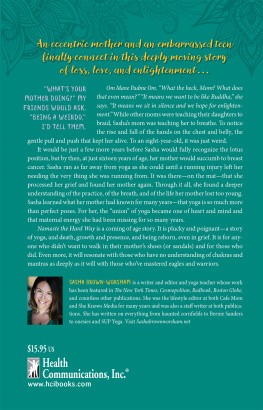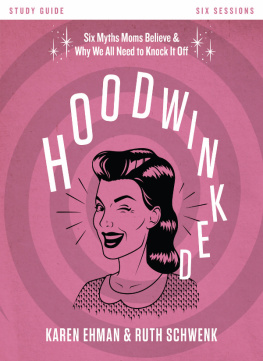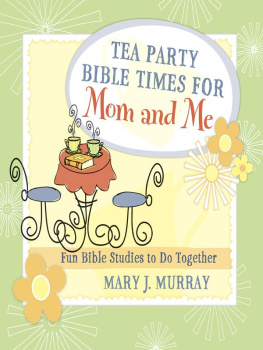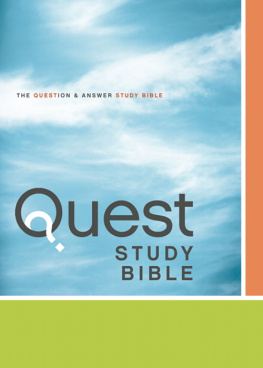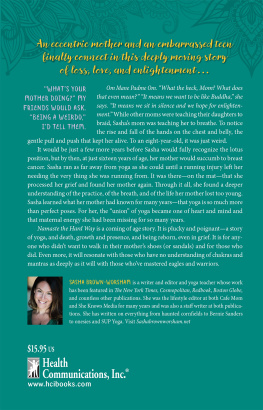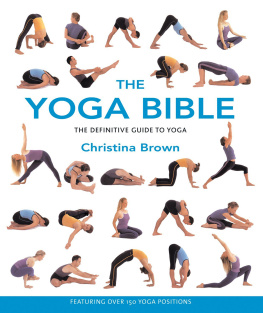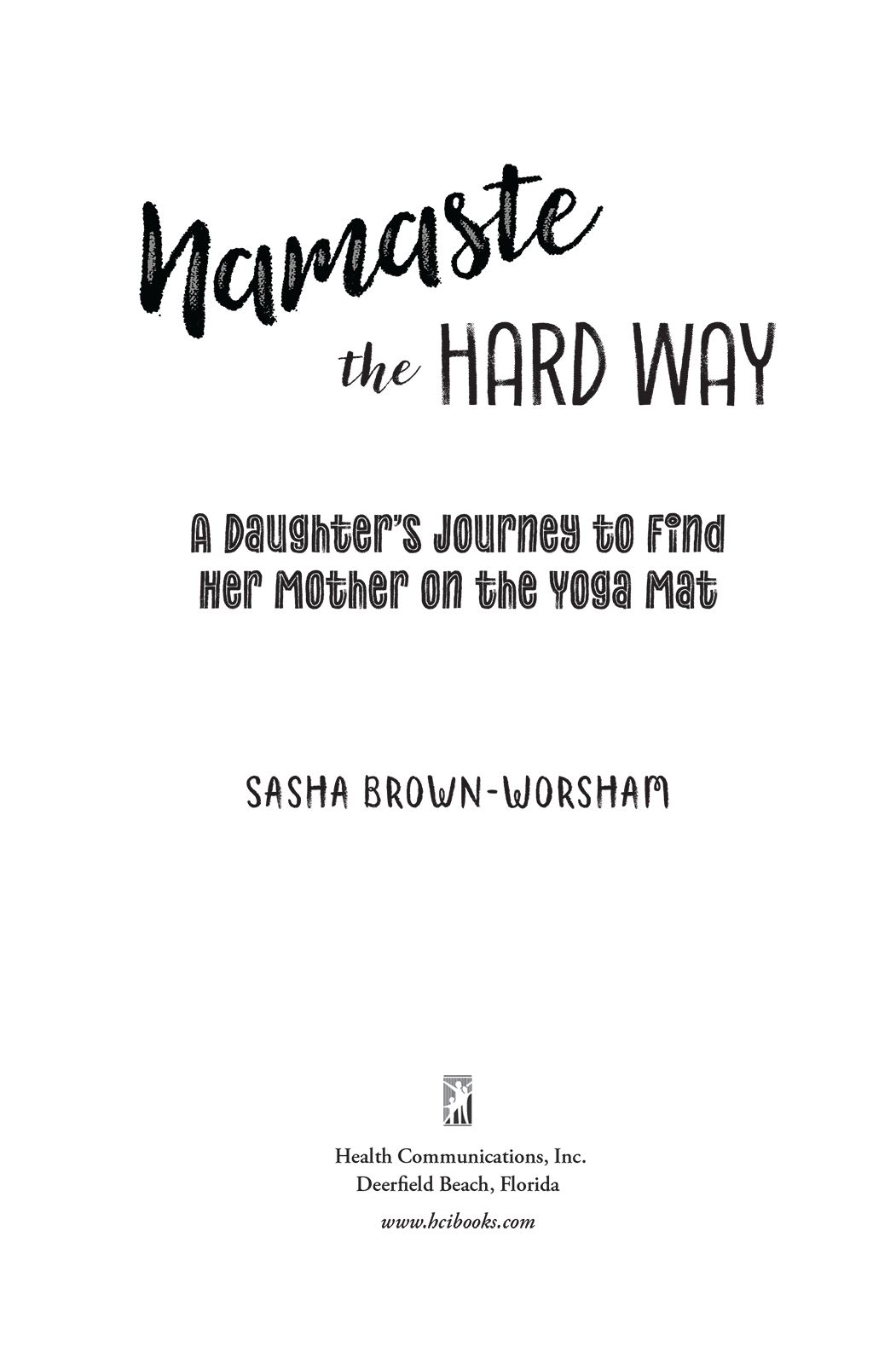Library of Congress Cataloging-in-Publication Data is available through the Library of Congress
2018 Sasha Brown-Worsham
ISBN-13: 978-07573-2060-6 (Paperback)
ISBN-10: 07573-2060-0 (Paperback)
ISBN-13: 978-07573-2061-3 (ePub)
ISBN-10: 07573-2061-9 (ePub)
All rights reserved. Printed in the United States of America. No part of this publication may be reproduced, stored in a retrieval system, or transmitted in any form or by any means, electronic, mechanical, photocopying, recording, or otherwise, without the written permission of the publisher.
HCI, its logos, and marks are trademarks of Health Communications, Inc.
Publisher: Health Communications, Inc.
3201 S.W. 15th Street
Deerfield Beach, FL 334428190
Cover and interior design and formatting by Lawna Patterson Oldfield
Contents

Introduction

T his is my story of yoga, death, pain and discomfort, growth and presence, and being reborn even in grief.
A yoga class consists of various steps. We arrive and start to center, often on our backs. We let outside concerns float away and notice the little pains and discomforts we have brought with us. Then we start to notice the breath, the rise and fall of hands on our chest and belly, the gentle pull and push that keeps us alive but that we rarely focus on in the way it deserves.
This breath is life.
Next we move, connecting that breath to the body. We undulate the spine in cat and cow postures, or we twist, lying supine on our backs. Each inhalation provides a chance to strengthen and embolden. Each exhalation is an opportunity to surrender and melt a little deeper.
Eventually we find the top of the mat Urdhva Hastasana (upward salute). We reach for the sky, then dive down to the earth. After sun salutations, we begin to flow from one pose into another.
As much as vinyasa practice is linear, it is also fluid. A strengthening posture may lead to balancing, surrendering, or opening the heart. It mirrors life. As children we live in the moment, as yogis we live fully present. We have little time to reflect, and so we rarely do. As we grow and have more time behind us, we begin to see all sides: our past, present, and future. In a practice, as in life, we flow from one to another. We try to remain here now, but we drift and move. Our past informs our future. So it is in this book. The lessons and spiritual path of my life continue to overlap. The more we examine pain, hold it, and breathe through it, the more we grow. Maybe its Utkatasana (chair pose) or a death in the family, but grief and discomfort offer their own lessons. They have so much to teach us if only we open ourselves to them.
Fastest Girl in the Hood

F or the first ten years of my life I am the fastest girl in the neighborhood. We live just outside downtown Dayton, Ohio. The houses are roughly twenty feet apart, three-bedroom homes with one-and-a-half bathrooms and small yards. For my parents, as with most in the neighborhood, our home was a starter, the kind newlyweds bought in Ohio in the late 1970s for $19,000, wondering if they could afford it.
Then the kids start coming, first in a house two doors down, then next door. I am born next, on July 19, 1977. More children follow, one after the other, year after year, except in my house, where my parents wait almost nine years to have my sister. The neighborhood kids are like siblings to me. We play all day in the hot sun, pile like puppies into our parents cars and drive to the pool, where we spend hours dunking each other, swimming to the bottom, and doing handstands with eyes so wide open they stay bloodshot all summer. At home we play hide-and-seek outdoors well past dark, catching fireflies and tackling each other until our parents scream for us from their front porches, long after the streetlights have come on.
It is a magic that later generations of kids may never experience, in a world of seat belts, child abduction stories, and dirt phobias, with parents so attentive that one can hear the whirring blades of their concern, like a helicopter circling over a traffic jam.
In the midst of all this, my mother discovers yoga.
On the afternoons I spend at one house or another, she is meditating. She had dabbled in meditation and some version of yoga back in her New York City days, before I was born. A close friend of my parents introduced her to George Gurdjieff, which led to meditation circles and eventually to yoga.
But this was long before I was born, even before my parents packed up their Brooklyn Heights rental apartment and moved back to their shared home state, Ohio, so my father could attend law school at the University of Dayton. They bought the small house on the corner of Burbank Drive and Audrey Place for $19,000. At the time it was a financial stretch, but they loved the details of the two-story brick house: the built-in formica kitchen table that jutted out from a built-in display cabinet, the cute sunroom off the dining room, the large room over the garage where my father could place his fathers former law school desk, the walls he lined with books and papers, and the small sewing room, which served as a catch-all space because no one in my family could sew as much as a button onto a shirt.
These decisions were made long before me. They spent three years in this house while my father gutted out his classes and eventually passed the bar. There is a photo of him in his black cap and gown at his law school graduation. He has long hair and a long beard. He looks a little like a short, stubby Rasputin. Beside him, my mother is dressed all in white, and her belly is so big she looks as though she might topple forward. Its the only photo I have of her when she was pregnant with me.
They put me in the sewing room for the first few months of my life or so I am told. By the time I develop any conscious memory, I am in the large bedroom right beside theirs, with blue walls, a blue carpet, and a closet big enough to store all kinds of things, including my pinafore dresses, Christmas decorations, and my fathers vast pornography collection, which was initially stacked safely in a box marked Ashleys things in the top right corner of the closet. It takes me many years to find all those Playboy magazines, stuff them into a duffel bag, and distribute them on the school playground.
My parents buy me a water bed, which becomes the talk of the neighborhood. Kids come in and out of the house to jump on it and ride the waves. Another kids house has a basketball court, and anothers has a swing set. One kid has a garage full of old screws and pieces of wood that we use to build forts.

